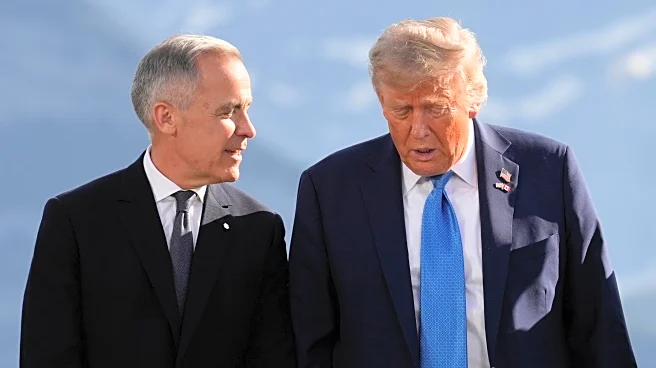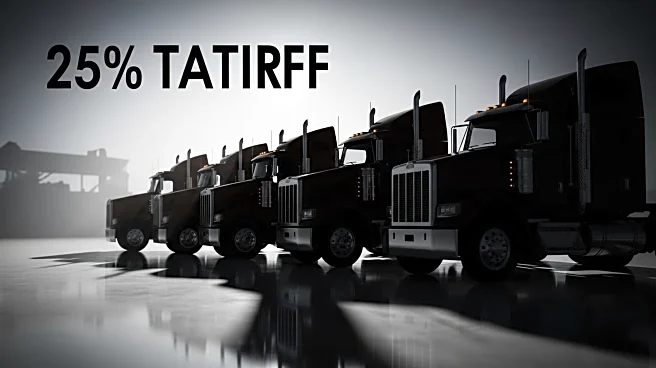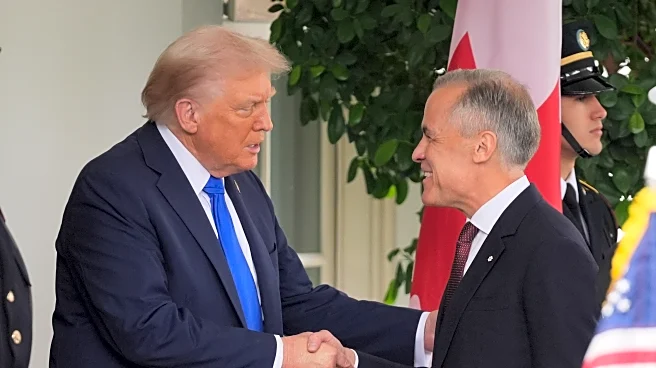What is the story about?
What's Happening?
President Trump has announced the imposition of 25% tariffs on imports of heavy-duty trucks, set to begin on November 1. This decision was made public via social media on October 6, following extensive lobbying efforts by U.S. automakers. The tariffs are intended to protect domestic manufacturers from foreign competition, particularly affecting trucks built in Mexico. The move is part of a broader strategy to bolster the U.S. automotive industry by making foreign imports less competitive in terms of pricing.
Why It's Important?
The implementation of these tariffs is significant for the U.S. automotive industry, as it aims to shield domestic truck manufacturers from international competition. By increasing the cost of imported trucks, U.S. automakers may gain a competitive edge, potentially boosting local production and employment. However, this could also lead to higher prices for consumers and strained trade relations with countries like Mexico, which are major exporters of heavy-duty trucks to the U.S. The tariffs could impact supply chains and lead to retaliatory measures from affected countries.
What's Next?
As the tariffs take effect, stakeholders in the automotive industry will be closely monitoring the impact on truck prices and sales. U.S. automakers may ramp up production to meet potential increased demand for domestically produced trucks. Meanwhile, foreign manufacturers might explore strategies to mitigate the impact, such as relocating production or negotiating trade agreements. The U.S. government may face diplomatic challenges as affected countries respond to the tariffs, potentially influencing future trade negotiations.
AI Generated Content
Do you find this article useful?















